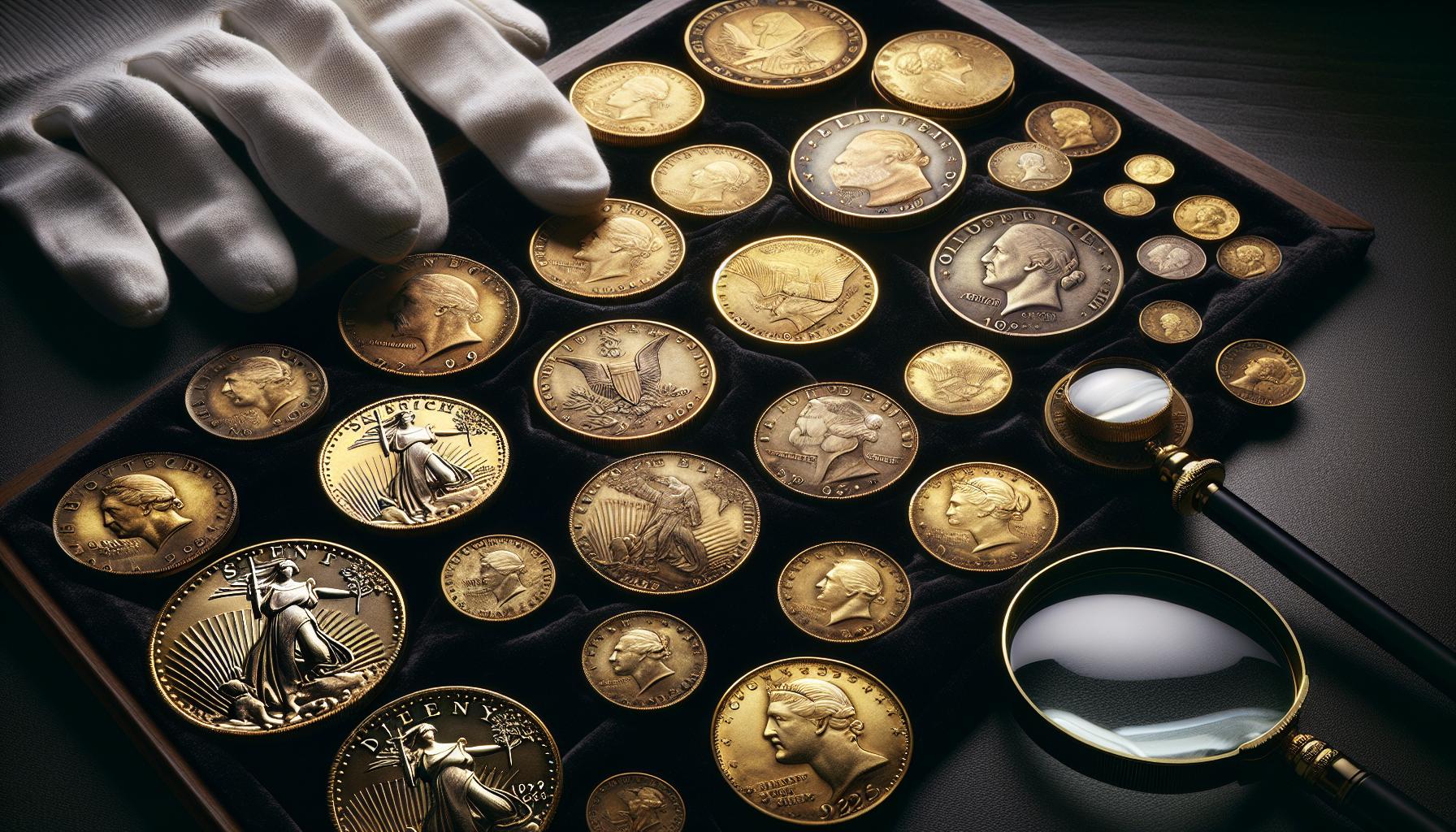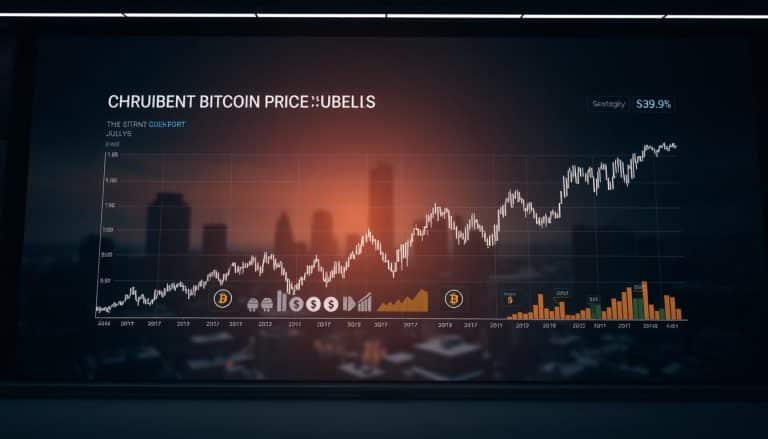Unlocking the True Worth of Your $5 Coins
Ever found an old $5 coin and wondered about its worth? You’re not alone. The value of $5 coins is a topic that’s captivated many, from numismatists to ordinary folks who’ve stumbled upon these intriguing pieces of history.
In the world of coin collecting, understanding the value is about more than just the face value. It’s about the story behind the coin, its rarity, and its condition. But how do you determine these factors? What’s the real worth of that $5 coin you’ve got?
Stay tuned as we delve into the fascinating world of $5 coins, shedding light on their history, their worth, and the factors that influence their value. This is your guide to understanding and appreciating the true value of $5 coins.
Key Takeaways
- The value of a $5 coin goes beyond its face value – it factors in the coin’s story, rarity, and condition. Renowned among collectors are the Capped Bust, Liberty Head, and Indian Head $5 coins.
- Inscriptions on $5 coins, such as the mintmark and the depiction of Lady Liberty, add to their historical significance and might increase their value.
- Several aspects influence the value of a $5 coin, including age and mintage, condition of the coin, and rarity and demand. Older coins with lower mintages, preserved well, and high demand often fetch higher prices.
- Evaluating a coin’s condition involves understanding the Sheldon Coin Grading Scale and potentially seeking the help of professional grading services. Coins with high grades on this scale typically have a higher market value.
- Noteworthy $5 coins include the Classic Head Half Eagle and the Liberty Head Half Eagle. These coins’ values vary dramatically based on their condition, specific variations, and scarcity.
- $5 coins can be bought or sold on trusted coin marketplaces and online auction sites. Users must ensure careful scrutiny of seller reputation and coin grading. Price setting strategies, such as starting low for sales and setting a maximum bid limit for purchases, can help optimize the transaction value.
- Preserving $5 coins involves proper handling, adequate storage, and insuring the collection. Proper insurance policies that cover numismatic collections can safeguard the financial value of these coins against unforeseen scenarios.
Understanding the 5 Dollar Coin
This section delves into the fascinating world of the $5 coin, a piece of currency that holds significant value beyond its stated worth.
Brief History of the 5 Dollar Coin
Tracing the roots of the $5 coin, it comes into play as an integral part of the United States’ early coinage system. The U.S. Mint started producing this gold coin, called a “half eagle,” in 1795. This continued till 1929, with occasional interruptions due to changing gold standards and coinage legislation. Heralded for its unique designs representing different periods in American history, the $5 coin indeed is a collector’s treasure.
Specifically, the most sought after $5 coins are those from the Capped Bust (1807-1834), Liberty Head (1839-1908), and Indian Head (1908-1929) series. These coins, due to their rarity and historical significance, often fetch astounding prices, with some exceptional pieces traded for over $80,000 USD.
Deciphering the Inscriptions
Understanding the inscriptions on these coins can significantly elevate their appreciation. Generally, $5 coins bear inscriptions of the issuing country, face value, and mint year. More notably, they have an image of Lady Liberty, and the term “E Pluribus Unum” – a Latin phrase meaning “Out of Many, One,” representing the unity of the states in the U.S.
Another intriguing feature is the mintmark. For example, coins with an “S” were minted in San Francisco, and those with “CC,” were produced in Carson City. These mintmarks add further to a coin’s rarity and thus its value, making understanding them vital in the world of $5 coin collection.
Factors Influencing the 5 Dollar Coin Value

This section delves deeper into aspects influencing the market value of the $5 coins. These factors range from the tangibles, such as age and state of preservation, to intangibles, such as demand and scarcity.
Age and Mintage
Age influences the value of a $5 coin as it often links directly to rarity and historical significance. Two aspects constitute age in numismatics: the actual period elapsed since minting, evidenced by the date on the coin, and the mintage. The mintage refers to the number of coins produced within a specific period or for a particular design. For instance, a coin dated 1834 from the Classic Head series has considerable value due to the relatively lower mintage compared to other periods. Age and mintage form an inseparable pair in the valuation process.
Condition of the Coin
Coin condition, typically referred to as the grade in numismatic circles, critically affects a $5 coin’s value. The grade denotes a coin’s preservation state, considering aspects like wear, damage, or blemishes. Coins graded Mint State (MS) or About Uncirculated (AU) command higher prices than their more worn counterparts, like those rated as Very Fine (VF) or Good (G). For instance, an 1886-S Liberty Head half eagle in MS condition might fetch above $6,000, whereas the same coin in VF condition attracts under $500. Thus, it’s critical to maintain coins in pristine condition to realize their maximum market value.
Rarity and Demand
Rarity and demand form the crux of a $5 coin’s market value. Rarity depends on a coin’s mintage and survival rate. For example, a 1929 Indian Head half eagle often fetches hefty sums as it’s the last of the series, with a limited number surviving in good condition. Demand, on the other hand, links to popularity with collectors and the general interest in a coin’s design or the historical period it signifies. A surge in demand for a scarce coin amplifies its value significantly. For instance, an 1854-S Liberty Head half eagle, one of just three known to exist, sold for $2.16 million reinforcing the crucial role rarity and demand play in determining a $5 coin’s value.
How to Evaluate the Condition of the Coin
Evaluating a coin’s condition forms a critical part of assessing its true value. The two main components include understanding the Sheldon Coin Grading Scale and making use of reputable coin grading services.
The Sheldon Coin Grading Scale
Begin by familiarizing yourself with the Sheldon Coin Grading Scale. Established by Dr. William Sheldon in 1949, this 70-point numerical scale serves as a significant tool in numismatics. The scale ranges from 1, denoting “Poor” condition, to 70, symbolizing “Perfect Mint State.” For instance, a coin rated 70 exhibits no post-production imperfections when viewed under 5x magnification. On the contrary, a coin with a score of 1 barely retains any detail but remains identifiable.
Coin Grading Services
In addition to understanding the Sheldon Coin Grading Scale, consider employing professional coin grading services. Numerous renowned bodies provide these services, such as the Professional Coin Grading Service (PCGS) and the Numismatic Guaranty Corporation (NGC). These organizations offer an objective, third-party appraisal of your coin, ensuring its authenticity and ascertaining its grade. Particularly for novices, availing of these services can ensure a much more accurate evaluation, taking into account intricate details that might otherwise go unnoticed.
Remember, evaluating the condition of your $5 coin isn’t a mere visual assessment. It involves a firm grasp of the Sheldon Coin Grading Scale and potentially the assistance of professional grading services. By conducting thorough research and making informed decisions, you can obtain an accurate reflection of your coin’s true value.
Noteworthy 5 Dollar Coins and their Values
Venture into the world of fascinating and valuable half eagles. In this section, we delve deeper into two famous $5 coins that retained high market stature – the Classic Head Half Eagle and the Liberty Head Half Eagle.
The Classic Head Half Eagle
Consider the Classic Head Half Eagle (1834-1838), a coin bearing design modifications by Engraver William Kneass. Kneass, aiming for practical coinage goals, aided in reducing the gold content in the $5 coin. These modifications inspired the birth of the “Classic Head” term, alluding to Liberty’s portrayal on the coin.
The values of Classic Head half eagles vary. Example, the 1834 Classic Head, in mint state(MS)-63, fetches roughly $25,000. Circulated examples, rated Very Fine(VF)-20, might command $450. Condition, hence, holds extreme significance attached to a Classic Head half eagle’s value.
The Liberty Head Half Eagle
Let’s shift focus to the cherished Liberty Head Half Eagle (1839-1908). Christian Gobrecht’s design masterpiece holds the record as the longest running coinage design in U.S. history. Liberty’s profile, adorned with a coronet inscribed with “Liberty,” features on the obverse, while a heraldic eagle dominates the reverse.
Variations within this series including changes in weight, diameter, and the design itself—alter the coin value markedly. For instance, the 1854-S, a rarity among this series, sold for a stunning $1.5 million in a 2005 auction, due to its extreme scarcity. However, plentiful Mint State examples from common dates from the later part of the series may trade for less than $500.
Deciphering the precise value of a Liberty Head Half Eagle requires comprehensive understanding of its grade, variety, and overall appeal.
Where to Buy and Sell 5 Dollar Coins
Embarking on a venture to buy or sell $5 coins, a proper understanding of the platforms available for this commercial exchange remains paramount. Commensurate insight into the worth and liquidity of half eagles can be achieved in these arenas, aiding in gaining value for your investment. Follow the subsequent H3 headings for clarity.
Trusted Coin Marketplaces
Recognised coin marketplaces serve as optimal locations for your $5 coin activities. Platforms such as the American Numismatic Association and Coin World constitute significant marketplaces that harbor a rich array of half eagles. These venues work by connecting dealers and collectors from across the globe, establishing a diverse and vibrant marketplace.
Take a meticulous approach when navigating these sites, paying close attention to the seller’s rating and the coin’s grading. Reputable marketplaces often provide extensive details on the coins’ conditions, ensuring you comprehend the quality and worth of your $5 coin. Authenticating a $5 coin’s value could lead to the uncovering of precious tokens such as the 1854-S Liberty Head half eagle, which falls in the 80,000 USD range.
Online Auction Sites
Online auction sites make up the other segment of the coin transaction sphere. Websites like eBay and Heritage Auctions offer an easy-to-navigate online space for the buying and selling of $5 coins. Heritage Auctions, for example, exhibits a robust assortment of half eagles, boasting a record sale of the 1854-S Liberty Head half eagle at a staggering 2.8 million USD. Notably, these platforms host auctions, giving you the chance to bid on specific coins.
When selling a $5 coin on these platforms, consider starting the bidding amount at a fraction of the coin value. This strategy entices potential buyers and creates a competitive bidding environment, which could result in the coin selling for more than its initial value. For the buying process, setting a maximum bid limit helps to avoid overspending.
While these platforms offer extensive possibilities, careful scrutiny and vigilance are key to ensuring successful transactions. Consider the seller’s reliability, shipping cost, and the current market value of the $5 coin you desire. Remember, the value of a coin is not static but varies with demand, scarcity, and market trends.
Protecting and Preserving Your 5 Dollar Coin
Preserving and protecting a valuable piece like the $5 coin involves strategic measures. This section elucidates the importance of appropriate handling, storage, and insurance for coin collections.
Proper Handling and Storage of Coins
While engaging with precious coins, handling them properly helps retain their value. Don’t hold coins by their face; instead, pick them up from their edges to prevent unnecessary contact and potential damage. Touching the coin surfaces can leave smudges, impressions, or even scratches that diminish the coin’s condition and, consequently, its value.
For storage, consider coin albums, holders, or cases specifically designed to protect coins. Avoid regular boxes or containers that might expose the coins to harmful elements like dust, humidity, and temperature extremes. Moreover, bear in mind that individual storage is ideal for coins of significant value such as the $5 coin. By doing so, you’ll reduce the risk of coins rubbing against each other and causing damage.
Insurance for Coin Collections
Insurance plays an essential role in safeguarding coin collections. While ensuring proper handling and storage significantly reduce potential physical damage to your coins, insurance protects you financially from unforeseeable circumstances like theft or natural disasters. Opt for specialized insurance plans tailored for numismatic collections, as regular household insurance might not cover the true value of your coins.
Before finalizing the insurance, it’s critical to have an accurate valuation of your collection. Professional coin grading services offer expert evaluation and help ascertain the monetary value of your $5 coins. With an appropriate insurance plan in place, you can ensure complete protection for your valuable $5 coin collection.
Conclusion
So you’ve journeyed through the world of $5 coins, exploring their history, rarity, and the factors that determine their value. You’ve discovered the importance of details like mintmarks and inscriptions, and learned about specific coins like the Indian Head and Liberty Head half eagles. You’ve also gained insights on where to buy and sell these coins, and the importance of proper handling and storage.
Remember, the condition, grade, and rarity of a coin are crucial in determining its true value. Don’t forget to use professional grading services before securing insurance for your collection. Armed with this knowledge, you’re now prepared to delve deeper into the fascinating realm of coin collecting. Whether you’re a seasoned numismatist or a budding enthusiast, understanding the value of $5 coins is an essential part of your journey. Happy collecting!
What factors determine the value of a $5 coin or “half eagle”?
The worth of a “half eagle” is influenced by several factors: its history, rarity, and the condition of the coin itself. Moreover, its age, mintage, and demand are key determinants in its market value. Understanding inscriptions and mintmarks also contribute to its appreciation.
What role does rarity play in determining a $5 coin’s value?
Rarity plays a significant role in determining a coin’s worth. Scarce coins, like the 1929 Indian Head half eagle or the 1854-S Liberty Head half eagle, command higher prices due to their rarity and demand in the market.
How do specific designs and variations affect a $5 coin’s worth?
Designs such as the Classic Head Half Eagle and the Liberty Head Half Eagle, along with variations in these designs, can greatly influence a coin’s value. Condition, grade, and rarity of these designs and variations are crucial in accurately assessing the coin’s true value.
Where can I buy and sell $5 coins?
Reputable coin marketplaces, such as the American Numismatic Association and Coin World, are great places to buy and sell $5 coins. Additionally, online auction sites like eBay and Heritage Auctions also offer platforms for coin transactions.
What is the ideal way to safeguard $5 coin collections?
Ensure proper handling and storage techniques for your coin collections. It’s also important to get them insured. Professional coin grading services can provide accurate valuations, which allow for securing specialized insurance plans tailored for numismatic collections.






 Bitcoin
Bitcoin  Ethereum
Ethereum  Tether
Tether  XRP
XRP  USDC
USDC  Wrapped SOL
Wrapped SOL  TRON
TRON  Lido Staked Ether
Lido Staked Ether  Dogecoin
Dogecoin  Figure Heloc
Figure Heloc  Cardano
Cardano  WhiteBIT Coin
WhiteBIT Coin  Bitcoin Cash
Bitcoin Cash  Wrapped stETH
Wrapped stETH  Wrapped Bitcoin
Wrapped Bitcoin  USDS
USDS  Wrapped eETH
Wrapped eETH  Binance Bridged USDT (BNB Smart Chain)
Binance Bridged USDT (BNB Smart Chain)  Chainlink
Chainlink  Monero
Monero  LEO Token
LEO Token  WETH
WETH  Zcash
Zcash  Stellar
Stellar  Coinbase Wrapped BTC
Coinbase Wrapped BTC  Ethena USDe
Ethena USDe  Litecoin
Litecoin  Hyperliquid
Hyperliquid  Sui
Sui  Avalanche
Avalanche  Hedera
Hedera  sUSDS
sUSDS  Shiba Inu
Shiba Inu  Dai
Dai  USDT0
USDT0  Canton
Canton  Toncoin
Toncoin  PayPal USD
PayPal USD  World Liberty Financial
World Liberty Financial  Uniswap
Uniswap  Cronos
Cronos  Ethena Staked USDe
Ethena Staked USDe  Mantle
Mantle  USD1
USD1  Polkadot
Polkadot  Rain
Rain  Bitget Token
Bitget Token  MemeCore
MemeCore